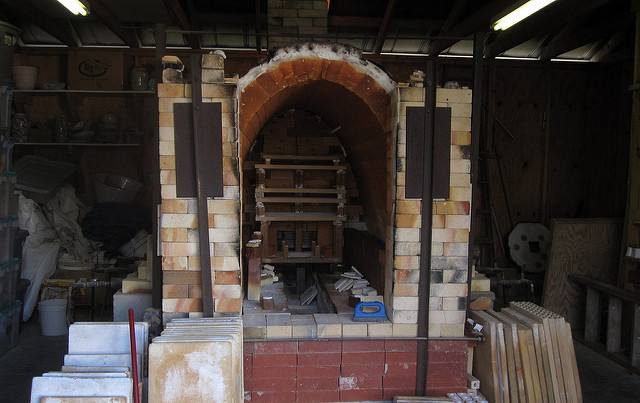 Photo by Tony Atler, Creative Commons Attribution 2.0 Generic
Photo by Tony Atler, Creative Commons Attribution 2.0 Generic
Crumbling and on its last leg, the soda kiln at the IS183 Art School ceramics studio was in dire need of repair. Since very few public studios possess this equipment, and there are no others in the area, their soda kiln is considered a rare and special resource.
That’s why the studio took to the crowdfunding site Kickstarter to help build a new soda kiln for an active and vibrant community of artists. And, it worked. The IS183 Art School was able to raise $12,577 from their $11,652 goal — enough to complete the rebuild of the kiln.
To help your dream art project come to life, we dissected the elements of the IS183 Ceramic Studio’s fundraising page and found what worked.
Take a look at these nine elements of a successful crowdfunding campaign that all artists should use:
1. A Catchy Title
As the first thing potential donors will see, make sure you take the time and pride in picking a good name for your crowdfunding campaign. The IS183 Ceramic Studio used “Save Our Soda Kiln!” which not only showcased the necessity up front, but illustrated their passion for the project.
2. A Compelling Video
Take a peek at the Ceramic Studio’s introductory video. It’s personal. It’s high-quality. What’s more, it tells the compelling story behind the project. The video shows artists hard at work in the studio and features pictures of the dilapidated kiln to demonstrate their need. And, it highlights all the project details while answering questions potential donors might have. Need we say more?
Watch the full video here.
3. An Explicit Goal and Timeline
The Ceramics Studio at IS183 Art School lists a very clear goal, stating exactly what type of kiln they need and in what deadline it needs to be ready for new students. Including these details indicates that they’re taking the project seriously — allowing donors to feel more confident about supporting the project financially.
4. The "Why"
Another amazing element of the “Save Our Soda Kiln” crowdfunding page is their explanation of why they want this specific kiln. It’s revealed how unique this type of firing is for ceramicists and how important it is to their surrounding community of artists. Including this purpose skillfully builds an emotional connection between them, their fans, and this type of art. It's a major must for any artist's crowdfunding campaign.

Images of the existing kiln on the studio’s Kickstarter page.
5. Multiple Examples
The Ceramics Studio included lots of pictures of the run-down kiln — and for good reason. Not only does it establish credibility for the campaign, but it helps paint a picture of what the final outcome of your art project might be. And, it’s far easier to hand over your money for something tangible than something you can’t quite grasp.
6. A List of Costs
When it comes to donating, no one wants their money to be wasted. People will feel more compelled to your cause if they know exactly what their donation is going towards. So, include the costs you need to have covered. For example, the Ceramics Studio lists supplies and exact costs like bricks, kiln furniture, and tools that they need help paying to make the soda kiln come to life.
7. Great Donor Gifts
The fun part of crowdfunding sites like Kickstarter is being able to give donors a little something in return. For pledging different amounts to the campaign, the studio was able to offer everything from a thank-you tile and special reception invite for $100, to a certificate for an IS183 art class and more for $1,000.
The key? Pick a gift of value, something that will tug at the heartstrings of potential donors, show your gratitude, and nudge them to commit. Just make sure it’s something your art business can afford.
8. Regular Progress Updates
Sharing updates about your art’s progress will not only ease the minds of donors but show others that come across your page that you’re taking your project seriously. In fact, the Ceramics Studio gave their backers at least three updates on the Kickstarter page after their project was funded.
9. Links to Other Sites
We couldn’t forget this one. Linking to the website was one final way that people could double-check the studio’s credibility. Plus, it’s always a smart way to bring in more sales for your art business. The more people see of your art, the more they can fall in love with and buy!
Now you’re ready to crowdfund.
Making a successful crowdfunding page may seem daunting at first, but just remember that the more you put into it, the more you will get out of it. Following these tips for your campaign will demonstrate to donors that you are passionate, committed, and qualified, helping you turn that dream art project into a reality.




